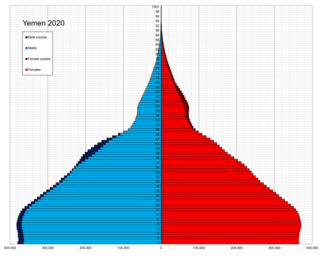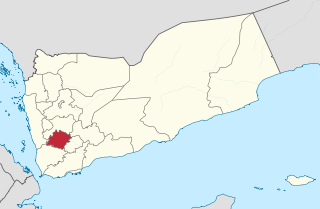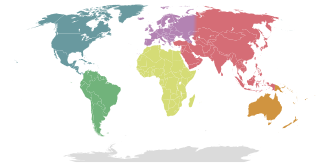
Demographic features of the population of Yemen include population density, ethnicity, education level, health of the populace, economic status, religious affiliations and other aspects of the population.

The economy of Yemen is weak and underdeveloped, even more so since the breakout of the Yemeni Civil War which led to instability and a growing humanitarian crisis. At the time of unification, South Yemen and North Yemen had different but equally struggling underdeveloped economic systems. Since unification, the economy was further harmed by Yemen's support for Iraq during the 1990–91 Persian Gulf War: Saudi Arabia expelled almost 1 million Yemeni workers, and both Saudi Arabia and Kuwait significantly reduced economic aid to Yemen. The 1994 civil war further drained Yemen's economy. As a consequence, Yemen has relied heavily on aid from multilateral agencies to sustain its economy. In return, it pledged to implement significant economic reforms. In 1997 the International Monetary Fund (IMF) approved two programs to increase Yemen's credit significantly: the enhanced structural adjustment facility and the extended funding facility (EFF). In the ensuing years, Yemen's government attempted to implement recommended reforms: reducing the civil service payroll, eliminating diesel and other subsidies, lowering defense spending, introducing a general sales tax, and privatizing state-run industries. However, limited progress led the IMF to suspend funding between 1999 and 2001.

The Republic of Yemen is divided into twenty-one governorates (muhafazah) and one municipality (amanah):
As of 2023, the world's core Jewish population was estimated at 15.7 million, which is approximately 0.2% of the 8 billion worldwide population. Israel hosts the largest core Jewry in the world with 7.2 million, followed by the United States with 5.7 million. Other countries with core Jewries above 100,000 include France (440,000), Canada (398,000), the United Kingdom (312,000), Argentina (171,000), Russia (132,000), Germany (125,000), and Australia (117,200). The number of Jews worldwide rises to 18 million with the addition of the "connected" Jewish population, including those who say they are partly Jewish or that have Jewish backgrounds from at least one Jewish parent, and rises again to 21 million with the addition of the "enlarged" Jewish population, including those who say they have Jewish backgrounds but no Jewish parents and all non-Jewish household members who live with Jews. Counting all those who are eligible for Israeli citizenship under Israel's Law of Return, in addition to Israeli Jews, raised the total to 25.5 million.

Dhamar, also spelt Thamar, is a governorate of Yemen located in the central highlands.

Ibb is a governorate of Yemen. It is located in the inland south of the country with Ta'izz Governorate to the southwest, Ad Dali' Governorate to the southeast, Dhamar Governorate to the north, and short borders with Al Bayda' Governorate to the east and Al Hudaydah Governorate to the west. It has an area of 5,344 km² and a population estimated at around 1,665,000 in 2004, making it the most densely populated governorate in Yemen outside of San'a city. It is the third largest province in Yemen.

Christianity is a minority religion in Yemen. The Yemeni constitution mentions religious liberty. There are three churches in Aden.

Sanaa, officially the Sanaa Municipality, is the capital and largest city of Yemen. The city is the capital of the Sanaa Governorate, but is not part of the governorate, as it forms a separate administrative unit. According to the Yemeni constitution, Sanaa is the capital of the country, although the seat of the Yemeni government moved to Aden, the former capital of Democratic Yemen, in the aftermath of the Houthi occupation. Aden was declared the temporary capital by then-president Abdrabbuh Mansur Hadi in March 2015.
Wusab Al Ali District is a district of the Dhamar Governorate, Yemen. As of 2003, the district had a population of 164,223 inhabitants. It is one of the largest districts of Dhamar Governorate, covering an area of 592 square kilometers, and is characterized by high mountains. As of 2019, it has a population of 275,137. It is part of the historical and geographical region of Wusab.
Dhi As Sufal District is a district of the Ibb Governorate, Yemen. As of 2003, the district had a population of 163,019 inhabitants.
'Al-Shat is a sub-district located in Qaflat Othor District, 'Amran Governorate, Yemen. Al-Shat had a population of 2562 according to the 2004 census.
Amran is a sub-district located in Amran District, 'Amran Governorate, Yemen. Amran had a population of 84669 according to the 2004 census.
Al-Amryain is a sub-district located in As Sawd District, 'Amran Governorate, Yemen. Al-Amryain had a population of 1596 according to the 2004 census.
Ibn Ahkam is a sub-district located in As Sudah District, 'Amran Governorate, Yemen. Ibn Ahkam had a population of 6332 according to the 2004 census.
Al-Harf is a sub-district located in Harf Sufyan District, 'Amran Governorate, Yemen. Al-Harf had a population of 10886 according to the 2004 census.
Al-Ma'marh is a sub-district located in Huth District, 'Amran Governorate, Yemen. Al-Ma'marh had a population of 796 according to the 2004 census.
Bawban is a sub-district located in Huth District, 'Amran Governorate, Yemen. Bawban had a population of 1132 according to the 2004 census.
Al-Daraf is a sub-district located in Sa'fan District, Sana'a Governorate, Yemen. Al-Daraf had a population of 5291 according to the 2004 census.







